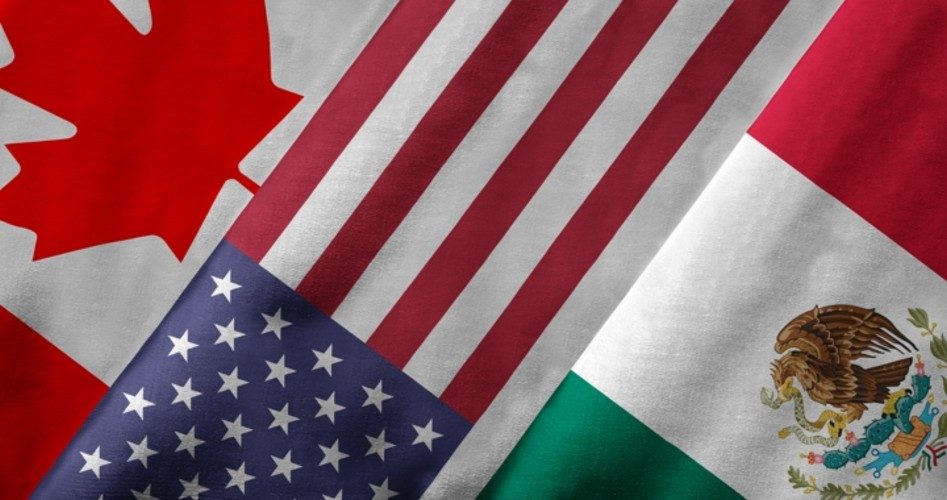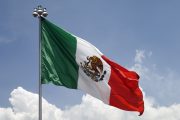
Following President Trump’s announcement on Monday that an agreement in principle had been reached between U.S. and Mexican officials, Canada was immediately invited to resume NAFTA negotiations.
Although President Trump referred to the new agreement on Monday as the “United States-Mexico Trade Agreement,” he now says that Canada could join as early as this Friday, thus keeping the agreement a trilateral one.
“I think Canada very much wants to make the deal. It probably won’t be good at all if they don’t,” Trump said. “They want to be part of the deal. We gave until Friday and I think we are probably on track. We’ll see what happens.”
Canadian Prime Minister Justin Trudeau expressed similar optimism. “I understand that the Americans and Mexicans very much want to try and get things done by Friday and we’re seeing if we can get to the right place by Friday, but as I’ve said all along it has to be the right deal for Canada and that’s what we are staying firm on,” Trudeau said during a press conference in northern Ontario on Wednesday.
Trudeau added, “No NAFTA deal is better than a bad NAFTA deal.” If Canada rejects the new agreement and chooses not to join the new agreement, then the Trump administration would proceed with Mexico on a new bilateral agreement.
Mexican President Enrique Peña Nieto wants to keep Canada in the mix, and he wants to sign an agreement before his successor, Andrés Manuel López Obrador (AMLO), becomes president on December 1.
But what happens if Canada does not become part of the new NAFTA deal? A bilateral U.S.-Mexico Trade Agreement (USMTA) may not fall under the umbrella of the president’s Trade Promotion Authority, and would likely be treated as a new agreement, according to lawmakers.
“To use Trade Promotion Authority’s ‘fast-track’ procedures, the administration must also reach an agreement with Canada. NAFTA was a tri-party agreement only made operative with legislation enacted by Congress,” Senator Pat Toomey (R-Penn.) said in a statement released on Tuesday.
“Any change, such as NAFTA’s termination, would require additional legislation from Congress. Conversion into a bilateral agreement would not qualify for TPA’s ‘fast track’ procedures and would therefore require 60 votes in the Senate,” Toomey explained.
If Republicans retain at least 50 seats in the Senate in the upcoming mid-term elections this November, they could approve a new trilateral NAFTA next year with Vice President Mike Pence casting the tie-breaking vote and without a single vote from the Democrats.
Should Canada fail to reach an agreement, the president may need the support of Democrats to reach the 60-vote threshold required to approve a bilateral USMTA.
However, earlier yesterday morning, Canadian Foreign Minister Chrystia Freeland expressed optimism about reaching a new agreement.
“We are encouraged by the progress that the U.S. and Mexico made on some of their key bilateral issues,” Freeland said. “On that basis we are optimistic about having some good productive discussions this week.”
She added, “We have a huge amount of work to do this week.” Freeland cut short a trip she had in France and Germany simply to be in Washington for the last hour negotiations.
“They worked late into the night last night and started again very early this morning. We’ve already been having some meetings today.” Freeland said about Canada’s negotiating team.
Owing to the timing of getting a new agreement before December 1 so outgoing Mexican President Peña Nieto can sign it, some think that Canada may be resuming negotiations from a position of weakness and have no choice but to pick whatever is presented to them, even a bad deal, if it wishes to remain in the trade pact.
“Canada is going to be presented with more of a take-it-or-leave-it offer,” said Avery Shenfeld, economics analyst for Canadian Imperial Bank of Commerce (CIBC) — one of Canada’s big five banks.
Andrew Scheer, a member of Canada’s parliament and leader of the opposition Conservative Party, tweeted on Monday, “Thanks to Justin Trudeau, Canada is on the outside looking in while Canadian jobs hang in the balance. His economic failures have ruined Canada’s bargaining position and jeopardized thousands of jobs.”
Scheer may be right. The United States and Mexico agreed to a 16-year term for the new trade agreement, allowing for review every six years. This means that if the Canadians do agree to unfavorable terms, they would have to wait at least six years before they could bring them up for further negotiations.
A lot will depend on what happens this week, but it seems doubtful that Canada would choose to be left out of an agreement, especially given the Trump’s administrations tariffs on Canadian auto imports.
Canadian negotiators are also reluctant to give up the sovereignty-trouncing Chapter 19 settlement dispute resolution, which the Trump administration wants to do away with.
NAFTA’s Chapter 19 created international review panels, binding all local, municipal, state, and even federal legislatures and courts to abide to NAFTA’s 1,700-plus pages of regulations.
Under Chapter 19, a Canadian or Mexican company can take a country such as the United States to a settlement dispute panel if the company claims that its products have been unfairly hit with anti-dumping or countervailing duties from the United States. If the panel sides with the company, it can mandate the United States pay back the duties and any other related damages.
Another major hurdle for Canada this week is the Trump administration position that they eliminate their 300-percent tariff on milk imports and other dairy products. Such a move would be a huge win for the U.S. dairy industry, which has been unable to sell their products at a competitive rate in the Canadian market.
However, the Trudeau administration faces immense pressure from the Canadian dairy lobby, and any agreement to drop existing tariffs may significantly hurt him politically.
“Trying to unwind that in a week is very, very difficult,” said Eric Miller, president of the Rideau Potomac Strategy Group and an advisor to the Canadian government on trade affairs. Miller continued, “Dairy farmers are a very powerful lobby” in Canada.
As powerful a lobby as Canadian dairy farmers may be, an even more influential force are the Deep State’s interests in retaining NAFTA as a key step toward regional integration and world government.
During an interview on Mexican radio, speaking about rules of origin, Mexico’s Economy Minister Ildefonso Guajardo said, “The whole issue of rules of origin is considered trilaterally, so if we go forward with a bilateral model it would need to be rethought. It’s not the same having integration between three countries as two.” (Emphasis added.)
According to Guajardo, the underlying purpose of the agreement is integration, i.e. to combine or merge the economies of the United States, Mexico, and Canada. The logical conclusion of such integration would be the creation of a North American Union akin to the present European Union.
This process of integration is already underway in various sectors, such as energy. A recent report published on August 2018 by the Government Accountability Office to the House of Representatives’ Subcommittee on Western Hemisphere, entitled “NORTH AMERICAN ENERGY INTEGRATION: Information about Cooperation with Canada and Mexico and among U.S. Agencies,” stated:
The United States cooperates with Canada and Mexico on integrating North American energy markets and infrastructure (energy integration). Cooperation occurs at the presidential and ministerial levels (e.g., the countries’ secretaries or ministers of energy) for strategic issues and at the agency level for technical issues.
The GAO further elaborates, “Eight U.S. agencies have engaged in multiple efforts to facilitate North American energy integration. DOE [the U.S. Department of Energy] generally serves as the lead agency on energy integration issues, while the Department of State — the lead agency on foreign policy — also leads some bilateral and trilateral efforts.”
According to page six of the report, “NAFTA has enhanced North American energy integration, facilitating a greater flow of oil, natural gas, and petroleum-derived products among all three North American countries.”
As for the new NAFTA negotiations, the report stated that it would have little effect on North American energy integration, as energy infrastructure among the three NAFTA parties is already well integrated.
Officials from both the U.S. State Department and Department of Energy interviewed by the GAO said they “did not expect the U.S. renegotiation of NAFTA and withdrawal from the Paris Agreement to have a significant impact and stated that the energy sector in North America is already well integrated.” In other words, as integrated as North America’s energy may be, it will continue to integrate further regardless of the ongoing NAFTA renegotiations.
The importance of NAFTA to the Deep State’s goals was revealed by Henry Kissinger’s own words in 1993, when he admitted that NAFTA “is not a conventional trade agreement, but the architecture of a new international system.”
To Kissinger and other globalists, NAFTA is a building block for world government, beginning with the regional integration of all three countries into one supranational, economic, and political union, commonly referred to as the North American Union.
Regardless if the old NAFTA is kept or a new agreement is reached — either bilaterally with Mexico or trilaterally with Canada — this same threat to U.S. national sovereignty would persist.
Make no mistake; NAFTA — even a renegotiated and modernized version — leaves in place the foundations and structures to merge all three countries into an eventual North American Union. For this reason alone, the United States should withdraw from NAFTA altogether regardless if the new agreement is a “better deal.”





